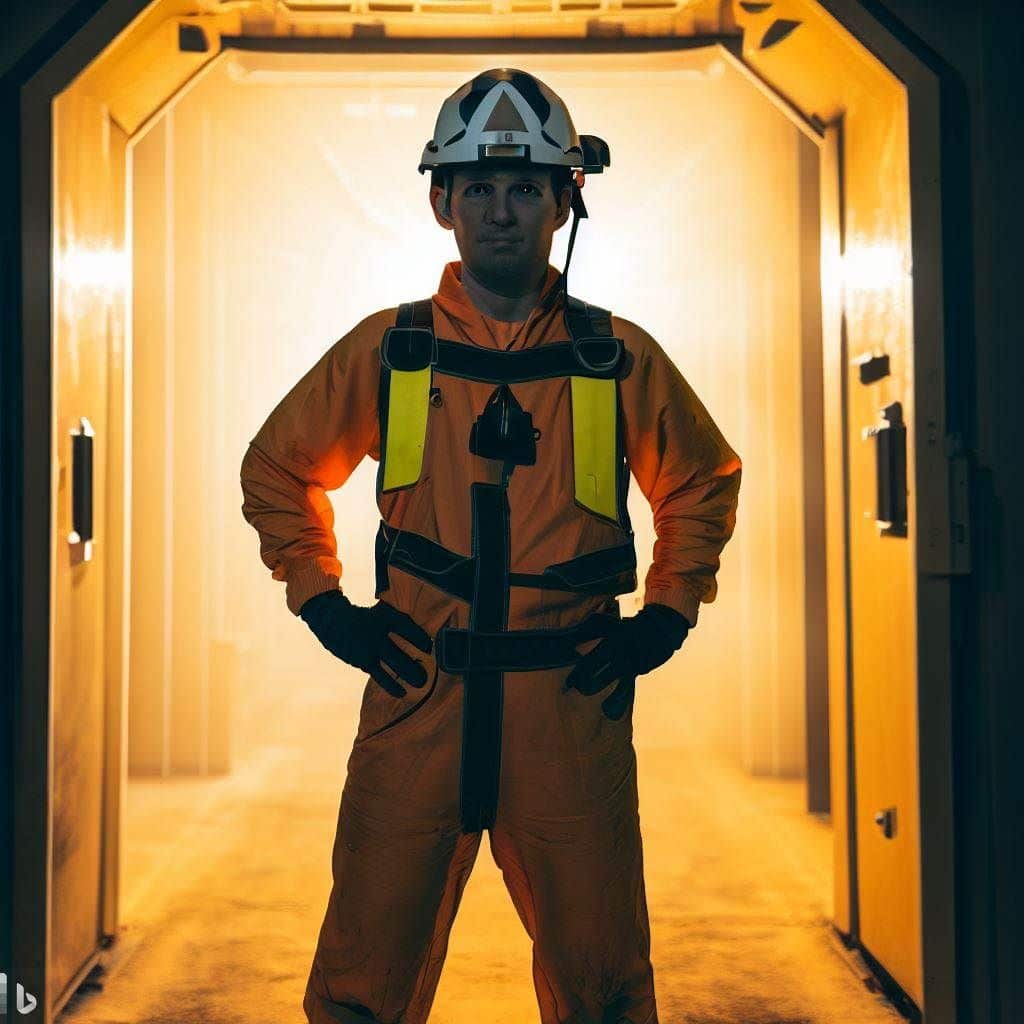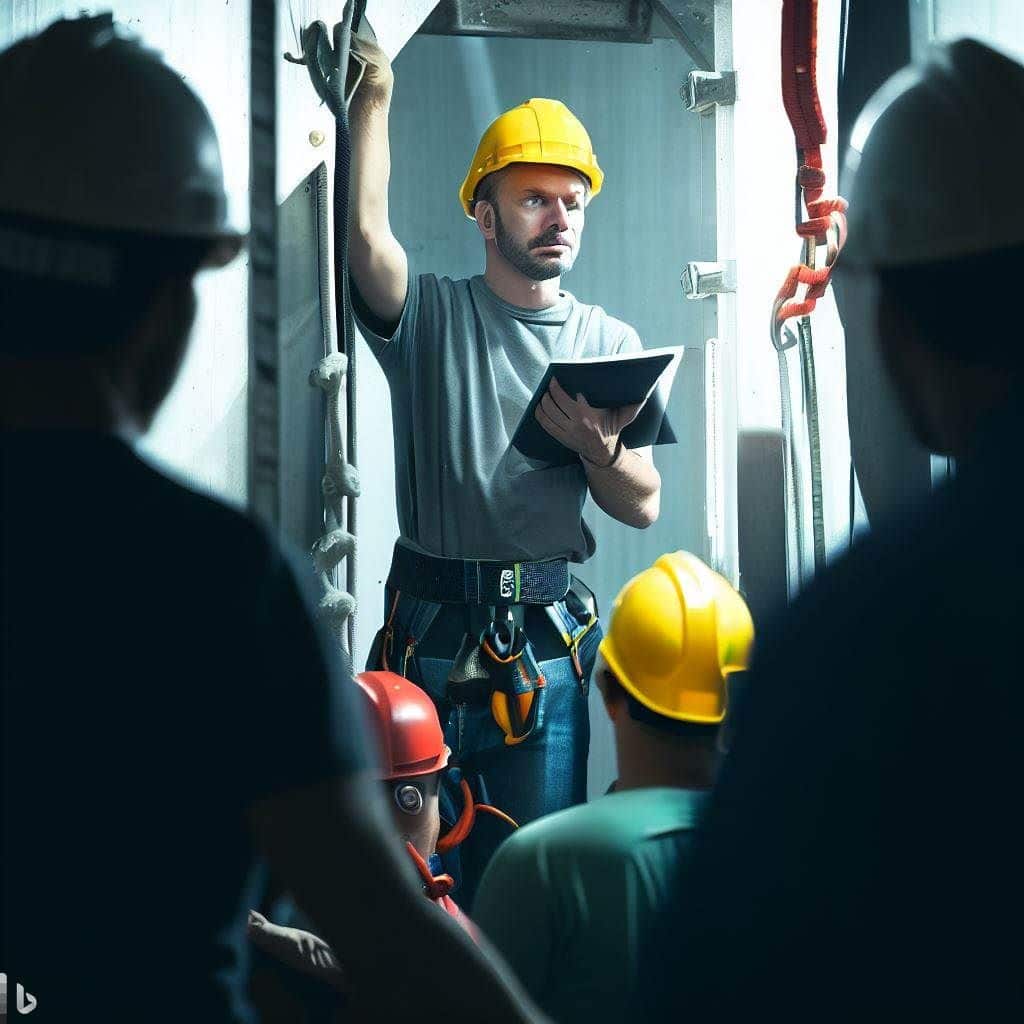Navigating Dangerous Terrain: The Importance of High-Risk Confined Space Training
Working in confined spaces presents many challenges and hazards, especially when those spaces are classified as high-risk. High-risk confined spaces are areas with significant dangers, such as hazardous substances, the potential for a fire or explosion, or the risk of engulfment. These environments require specialized training to ensure the safety of workers and compliance with legal requirements.
In this article, we will explore the importance of high-risk confined space training, the key components of such training, and how to choose the right training provider. We will also discuss the role of ongoing training and education in maintaining safety and the legal requirements for high-risk confined space training.
As someone who has completed high-risk confined space training and worked in these environments, I understand firsthand the vital importance of this specialized training. It has prepared me to face the unique challenges of working in high-risk confined spaces and helped prevent accidents and save lives.
The Dangers of Confined Spaces
Before delving into the specifics of high-risk confined space training, it is important to understand the general dangers associated with working in confined spaces. Confined spaces are areas not designed for continuous human occupancy, have limited access and egress, and may have a hazardous atmosphere. Some common examples of confined spaces include storage tanks, silos, pipelines, sewers, and tunnels.
Working in confined spaces can be extremely dangerous due to various factors. These may include:
- Oxygen deficiency or enrichment: A lack of oxygen can cause asphyxiation, while excess oxygen can increase the risk of a fire or explosion.
- Hazardous substances: Confined spaces may contain dangerous gases, vapors, or dust that can be harmful or even lethal if inhaled.
- Fire and explosions: The presence of flammable substances or ignition sources can create the potential for a fire or explosion to occur in a confined space.
- Engulfment: Workers can become trapped or engulfed by loose materials, such as sand or grain, which can quickly fill a confined space.
- Poor visibility and limited access: Dim lighting and tight spaces can make it difficult for workers to see hazards and escape in an emergency.

Understanding High-Risk Confined Space Training
High-risk confined space training is a specialized training designed to prepare workers for the unique challenges and hazards of working in high-risk confined spaces. This type of training goes beyond the basic principles of confined space entry and focuses on the specific risks and controls necessary to ensure safety in these environments.
Some of the core elements of high-risk confined space training may include:
- Identifying and assessing hazards: Workers must be able to recognize the potential hazards in a high-risk confined space, assess the level of risk, and implement appropriate controls.
- Use of specialized equipment: High-risk confined space work often requires specialized equipment, such as gas detectors, breathing apparatus, and rescue equipment. Training should cover this equipment’s proper use, maintenance, and inspection.
- Emergency response and rescue procedures: Workers must be prepared to respond quickly and effectively in an accident or emergency. High-risk confined space training should include instruction on emergency response and rescue procedures, including the use of rescue equipment and the importance of communication.
Key Components of High-Risk Confined Space Training
Several key components should be included in any high-risk confined space training program. These components ensure that workers understand the hazards and risks associated with high-risk confined spaces and are equipped with the knowledge and skills necessary to work safely in these environments.
Some of the key components of high-risk confined space training include:
- Hazard identification and risk assessment: This involves teaching workers how to identify the potential hazards present in a high-risk confined space, assess the level of risk, and determine the appropriate control measures to minimize those risks.
- Permit-to-work systems: A permit-to-work system is a formal, written procedure to control work activities in high-risk confined spaces. Training should cover the purpose and use of permits and the roles and responsibilities of those involved in the permit process.
- Atmospheric monitoring and gas detection: Workers must be trained to use gas detection equipment properly, interpret the readings, and respond to alarms.
- Personal protective equipment (PPE) and safety equipment: High-risk confined space training should include instruction on the selection, use, and maintenance of PPE and safety equipment, such as breathing apparatus, harnesses, and rescue devices.
- Communication and coordination: Effective communication is essential when working in high-risk, confined spaces. Training should cover the use of communication devices and the importance of teamwork and coordination among workers, supervisors, and emergency responders.
The Importance of Proper Training in Preventing Accidents
High-risk confined space training plays a crucial role in preventing accidents and ensuring the safety of workers. By providing workers with the knowledge and skills necessary to recognize hazards, assess risks, and implement appropriate controls, such training can help to prevent accidents and save lives.
For example, proper training in gas detection equipment can help prevent workers from entering a high-risk, confined space with a hazardous atmosphere. Similarly, emergency response and rescue procedures training can help ensure that workers are prepared to respond quickly and effectively in an accident or emergency.
In addition to preventing accidents, high-risk confined space training can contribute to a safer and more productive work environment. Properly trained workers are likelier to follow safe practices, use the equipment correctly, and communicate effectively with their colleagues and supervisors.
Legal Requirements for High-Risk Confined Space Training
In many jurisdictions, high-risk confined space training is not only necessary for ensuring the safety of workers but is also a legal requirement. Occupational health and safety regulations often require employers to provide workers with appropriate training and instruction on the hazards and risks associated with their work.
For example, in the United States, the Occupational Safety and Health Administration (OSHA) has specific regulations governing the training and qualifications of workers entering confined spaces, including high-risk spaces. Employers must ensure that workers receive the necessary training to perform their duties safely and comply with OSHA standards.
Similarly, in the United Kingdom, the Health and Safety Executive (HSE) sets out requirements for training and competence in confined spaces, including high-risk ones. Employers must provide appropriate training and ensure they can carry out their work. Failure to comply with these legal requirements can result in serious consequences for employers, including fines, penalties, and even criminal prosecution in some cases.
Case Studies: Incidents and the Role of Training
Numerous incidents have involved high-risk confined spaces in which inadequate training has been identified as a contributing factor. These case studies serve as a stark reminder of the importance of proper training in preventing accidents and ensuring the safety of workers. One such incident occurred in 2006 when five workers were killed in a confined space accident at a wastewater treatment plant in Florida.
The workers were overcome by hydrogen sulfide gas while working inside a manhole. Subsequent investigations revealed that the workers had not received adequate training in confined space entry procedures and the use of gas detection equipment. Another example is the 2010 explosion at the Kleen Energy power plant in Connecticut, which resulted in the deaths of six workers and injuries to many others.
The explosion occurred during a gas blow procedure in a confined space, and investigators determined that inadequate training and communication were among the factors that contributed to the disaster. These case studies highlight the critical role that high-risk confined space training plays in preventing accidents and protecting workers’ lives.
How to Choose the Right High-Risk Confined Space Training Provider
Selecting the right high-risk confined space training provider is an important decision that can significantly impact the safety and well-being of your workers. There are several factors to consider when choosing a training provider, including:
- Reputation and experience: Look for a training provider with a proven track record in delivering high-quality, effective training in high-risk confined spaces. Check references and seek recommendations from colleagues or industry associations.
- Accreditation and certification: Ensure the training provider is accredited or certified by a recognized industry body or regulatory authority. This can help ensure the training meets the required standards and meets legal requirements.
- Training content and delivery: Review the training provider’s course content and delivery methods to ensure they align with your organization’s and workers’ needs and requirements. Consider whether the training includes practical, hands-on components and theoretical instruction.
- Flexibility and customization: Some training providers may offer customized training programs tailored to your organization’s needs and requirements. This can help ensure the training is relevant and applicable to your workers and work environment.
- Ongoing support and resources: A good training provider should offer ongoing support and resources, such as refresher courses, mentoring, and access to educational materials, to help your workers maintain their skills and knowledge.

Maintaining Safety Through Ongoing Training and Education
High-risk confined space training is not a one-time event but should be considered an ongoing process. Regular refresher courses and continuing education can help ensure workers remain up-to-date with the latest safety procedures, equipment, and best practices.
In addition to formal training programs, employers should encourage a safety and learning culture within their organization. This may include providing workers access to educational resources, facilitating open communication and discussion about safety issues, and promoting continuous improvement. By investing in ongoing training and education, employers can help to maintain safety standards, prevent accidents, and protect the lives of their workers.
Conclusion: Investing in High-Risk Confined Space Training for Enhanced Safety
High-risk confined space training ensures workers’ safety and well-being in these hazardous environments. By providing workers with the knowledge and skills necessary to recognize hazards, assess risks, and implement appropriate controls, employers can help to prevent accidents and save lives.
In addition to preventing accidents, high-risk confined space training is a legal requirement in many jurisdictions. Employers must ensure their workers receive the necessary training to perform their duties safely and comply with occupational health and safety regulations.
By investing in high-risk confined space training, employers can not only fulfill their legal obligations but also demonstrate their commitment to the safety and welfare of their workers.
Frequently Asked Questions:
Q: What is a high-risk confined space?
A: A high-risk confined space is an area that presents significant dangers, such as the presence of hazardous substances, the potential for a fire or explosion, or the risk of engulfment. These environments require specialized training to ensure the safety of workers and compliance with legal requirements.
Q: Why is high-risk confined space training important?
A: High-risk confined space training is important because it helps ensure workers’ safety in these hazardous environments. By providing workers with the knowledge and skills necessary to recognize hazards, assess risks, and implement appropriate controls, employers can help to prevent accidents and save lives.
Q: What are some examples of high-risk confined spaces?
A: Some common examples of high-risk confined spaces include storage tanks, silos, pipelines, sewers, and tunnels.
Q: Are there legal requirements for high-risk confined space training?
A: High-risk confined space training is a legal requirement in many jurisdictions. Occupational health and safety regulations often require employers to provide workers with appropriate training and instruction on the hazards and risks associated with their work.
Q: How can I choose the right high-risk confined space training provider?
A: When choosing a high-risk confined space training provider, consider factors such as reputation and experience, accreditation and certification, training content and delivery, flexibility and customization, and ongoing support and resources.
